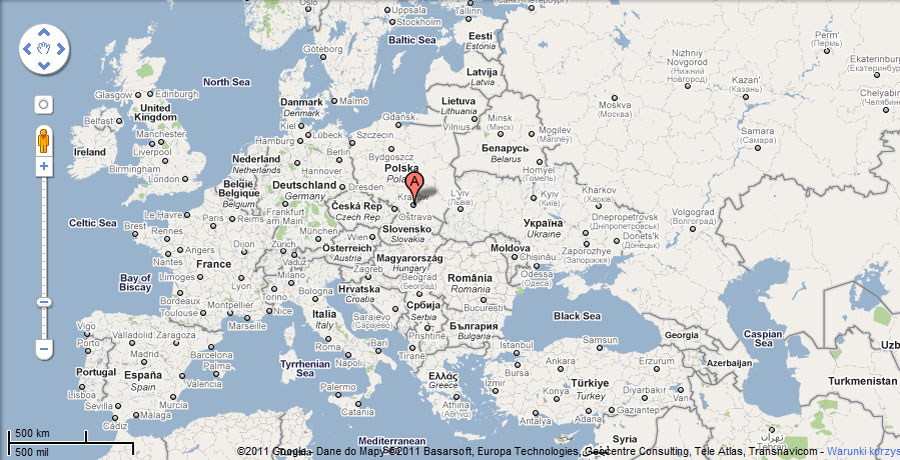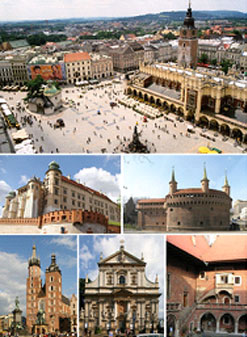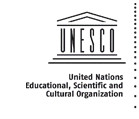|








|
|
|
Kraków (Polish
pronunciation: ['krakuf] ) also Krakow, or Cracow, is
the second largest and one of the oldest city in Poland,
situated on the Wisla River in the Malopolska region.
The city dates back to the 7th century. Krakow has
traditionally been one of the leading centre of Polish
academic, cultural, and artistic life and is one of
Poland's most important economic centre. It was the
previous capital of Poland.
It is not a simple task to describe the unique character
of Cracow to those who still have not had the
opportunity to visit this city. This uniqueness is
primarily due to the rare cultural heritage embodied
within the city walls. Here, in the year 1000, a Roman
Catholic bishopric was founded. Here, the residential
royal castle was constructed on the Wawel Hill, becoming
the site for the coronations and burials of kings, as
Cracow was the capital of Poland from the 11th to 17th
century. Here in 1364, the Cracow Academy was
established, the first Polish University (today renamed
the Jagiellonian University).
The city image has changed during the past centuries.
During the Middle Ages, Cracow was a safe, rich,
fortified city surrounded by walls with 55 towers
(fragments of the city fortification have been preserved
to this day). During the Renaissance, Cracow became the
centre of progressive ideas, with a culture that
concentrated the most outstanding humanists, writers,
architects and musicians. Even a few centuries later,
while the city was going through an economic decline
during the period of Modernism, quite probably the whole
of the Polish artistic elite found its haven in Cracow.
City life focused around the Market Square, the second
largest in Europe after St. Mark’s Square in Venice.
Only few European cities have such a distinct medieval
architectural layout as Cracow does. When we look down
the city roofs we will see an exceptional checked
pattern of streets, which are surrounded by fragments of
the surviving city walls. This view evokes the exciting
picture of a medieval fortified town surrounded by city
walls. The walls were strengthened with 47 towers and
had a total length of 3 km. Eight main gates led to the
town. Only one of them has survived. The walls not only
safeguarded the citizens but also the priceless pearls
of architecture inside. The medieval fortification
system survived until the 19th century. The local
authorities decided to demolish the walls and replace
them with a strip of green land around the city called
the Planty. Now it forms an oval city park, a rarity in
the world, which extends around the Old Town.
Tradition interlaces with modern times nearly everywhere
you go, and each stone has its own history. There is a
multitude of architectural monuments estimated at six
thousand buildings and other types and forms of
construction. Thanks to the extraordinary accumulation
of cultural wealth, the city was registered as one of
the 12 sites on the UNESCO World Heritage List. It is
impossible to describe or even list all the tourist
attractions in Cracow. One can be sure, however, that
each tourist will discover his or her own magical
Cracow. While some will follow the footsteps of Nicholas
Copernicus, others will be interested in sites linked
with John Paul II. Some will be fascinated by the
worldwide unique underground corridors of the Wieliczka
salt mine, and, yet others will wander around the alleys
of the Jewish Kazimierz district. Still others will
stand enchanted in front of the Wit Stwosz altar.
Magic Cracow: http://www.krakow.pl/english/
Cracow guide: http://www.krakow.travel/,
http://cracow.travel/


|
|
|
|








|







